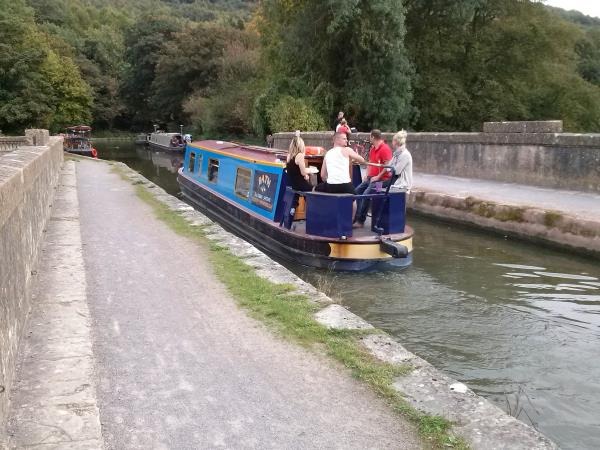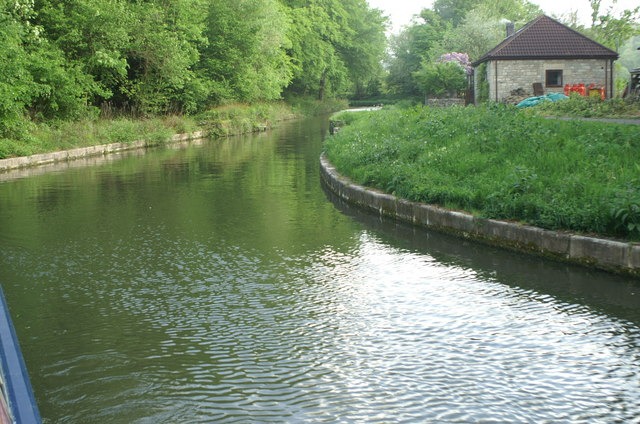
Below our knees, discerning the boundary between legs and trainers becomes nearly impossible. A viscous layer of river mud adheres to our shins, enveloping our shoes. Our skin experiences a fizzing, tingling sensation, courtesy of numerous nettles relishing their final flourish before winter sets in. Yet, if your gaze ascended from the battleground of middle-aged legs to the sweat-streaked faces above, you would encounter something unexpected: laughter, enthusiasm, and a slightly unhinged glint in the eyes.
My companion Alan and I find ourselves several hours into a self-supported, three-day endeavor: a run along the expanse of the historic Kennet & Avon Canal. This waterway, the most southern and arguably the most picturesque broadbeam canal in England, spans the country’s width, enabling narrowboats to journey from Bristol to London. Originally designed to revolutionize 18th-century trade, the canal offered an alternative to navigating the rocky perils and hazardous seas of the southern coast and the Channel. By avoiding pirates and unwanted attention from the French navy, merchants could peacefully traverse the canal, reaching their destination safely.
The canal represented an extraordinary achievement in civil construction. The initial 18-mile stretch, connecting Newbury to Reading, became navigable in 1723—just over three centuries ago. The project’s conclusion came 90 years later, in 1810, with the skilled engineer John Rennie overseeing much of the ambitious undertaking. Rennie, comparable to Isambard Kingdom Brunel in the realm of railways, played a pivotal role in the canal’s realization. The total cost of the venture amounted to £1 million—a substantial sum at the time, even though Rennie received a modest £360 for his contributions. Upon its completion, the canal spanned 96 miles, extending all the way from Bristol’s Floating Harbour to the easternmost lock on Reading’s River Kennet, where it meets the Thames. The waterway featured 107 locks (now reduced to 105), 236 bridges, two steam-driven pumping stations, a mile-long tunnel, and an uncertain count of pubs.
Despite its impressive length, the Kennet & Avon Canal faced economic challenges and eventually fell into disuse. The advent of the Great Western Railway, which ran parallel to the canal, contributed significantly to its decline. Goods that could have been transported on barges were redirected to carriages on the railway, marking the beginning of the canal’s prolonged and inevitable deterioration. The last vessel navigated the canal in 1952.

However, all hope was not lost. In the latter half of the 20th century, a dedicated group of volunteers and enthusiasts undertook the restoration efforts. In August 1990, Queen Elizabeth reopened the canal. The irony is striking: a waterway originally constructed for commerce, trade, and enterprise has transformed into a magnificent wildlife sanctuary. Today, it serves as a habitat for diverse bird species, various animals, and fish. Additionally, it provides a serene retreat for walkers, kayakers, cyclists, and, of course, a few runners like Alan and me.
Canal jogging boasts a significant advantage – its flat terrain, making it ideal for middle-aged runners averse to hills. Navigation is relatively straightforward, with regular “feeding stations” (pubs) along the way. Starting from the west offers the potential for the afternoon sun and prevailing wind to provide a gentle push.
That was the initial plan. However, we hadn’t considered certain factors. In November, daylight is fleeting, many off-season pubs are closed, and the onset of evening darkness happens swiftly. Not to mention the unexpected challenge of copious amounts of mud.
Our journey commenced early on a Saturday morning in Bristol, following a substantial breakfast overlooking the captivating Floating Harbour. Though the sky was blue, persistent heavy rain meant frequent encounters with sludgy water along the towpath, slowing our progress. After a morning of slipping and sliding, we reached Bath, where the river’s high water levels lapped at the foundations of the city’s elegant stone bridges. Covered in mud, we stumbled into a charming Georgian square for lunch, drawing astonished looks from tourists, as if we were unearthed prehistoric men from an ancient bog. After refueling with pasta and lemonade, we returned to the towpath, continuing eastward from the Roman city.
After trudging through more muddy miles, we paused at one of the canal’s treasures, the extravagantly adorned Dundas Aqueduct. This gracefully curved triple-arched structure, designed by John Rennie and completed in 1805, allows the canal to flow high above the tumultuous River Avon below.
Pressing onward, we traversed Bradford-upon-Avon, marveling at its medieval barns and bridges. Finally, in the pitch darkness, we reached the epitome of modern convenience – Melksham’s Travelodge. Resembling extras from “All Quiet on the Western Front,” we collapsed into our room. While I opted for a shower, Alan believed a bath was the only solution to the grime. When he emerged, the tub resembled a swamp, with so much mud that the plughole was blocked. Confessing our muddy misadventure to the cheerful receptionist, she simply laughed and reassured us, “Oh, don’t worry at all; I’ve seen a lot worse than that.”
The following morning, with stiff legs and aching bodies, we pressed on, marking off bridges and locks on our way to the undisputed highlight of the canal – Caen Hill. Pronounced “cane,” it stands as the steepest flight of locks globally, comprising 29 locks with a rise of 150 meters. This segment was the final part of the navigation to be completed. If luck is on your side and the lock gates align favorably, ascending the flight on a narrowboat can take between three to five hours – a literal uphill sail.
While the canal’s boat speed limit is 3 mph, there were moments when it seemed like we weren’t running much faster. Yet, as we left our bustling family lives behind, our racing minds slowed to synchronize with the steady cadence of our feet, and it felt precisely like the right pace. With each step, our random thoughts and cheerful banter unfolded, mirroring the lazy ribbon of the canal unraveling before us. Keep moving, and you’ll eventually uncover a delightful inner stillness.
On our second night in Hungerford, we indulged in a hearty feast, replenishing ourselves with food and fuel—onion rings, lasagne, and four pints, why not? The sight of two heavily mud-splattered runners in the dining room of the beloved Bear Hotel didn’t faze the locals at all.
As we embarked on the third day, tackling the final 30 miles of the canal towpath became a true test of endurance. Our feet, swollen and blistered from constant exposure to muddy wet conditions, exhibited the toll. Several toenails hung by a thread. The names of the passing narrowboats seemed to encapsulate our situation perfectly: in the morning, one called “Isn’t This Pleasant,” and in the evening, another named “Absence of Reason.
Finally, we reached the post-industrial outskirts of Reading. As we stumbled towards the conclusion, where the Kennet converges with the Thames, allowing boats to proceed downstream to London, we encountered an unexpected obstacle. The last 200 meters of the towpath were closed for maintenance on a retaining wall. It was hard to believe! After covering all this distance, we were now unable to reach the finish. The mix of emotions was palpable – unsure whether to burst into laughter or shed a few tears, we ended up doing a bit of both. In many ways, it felt strangely perfect – after all, no one truly wants a remarkable adventure to come to an end.



